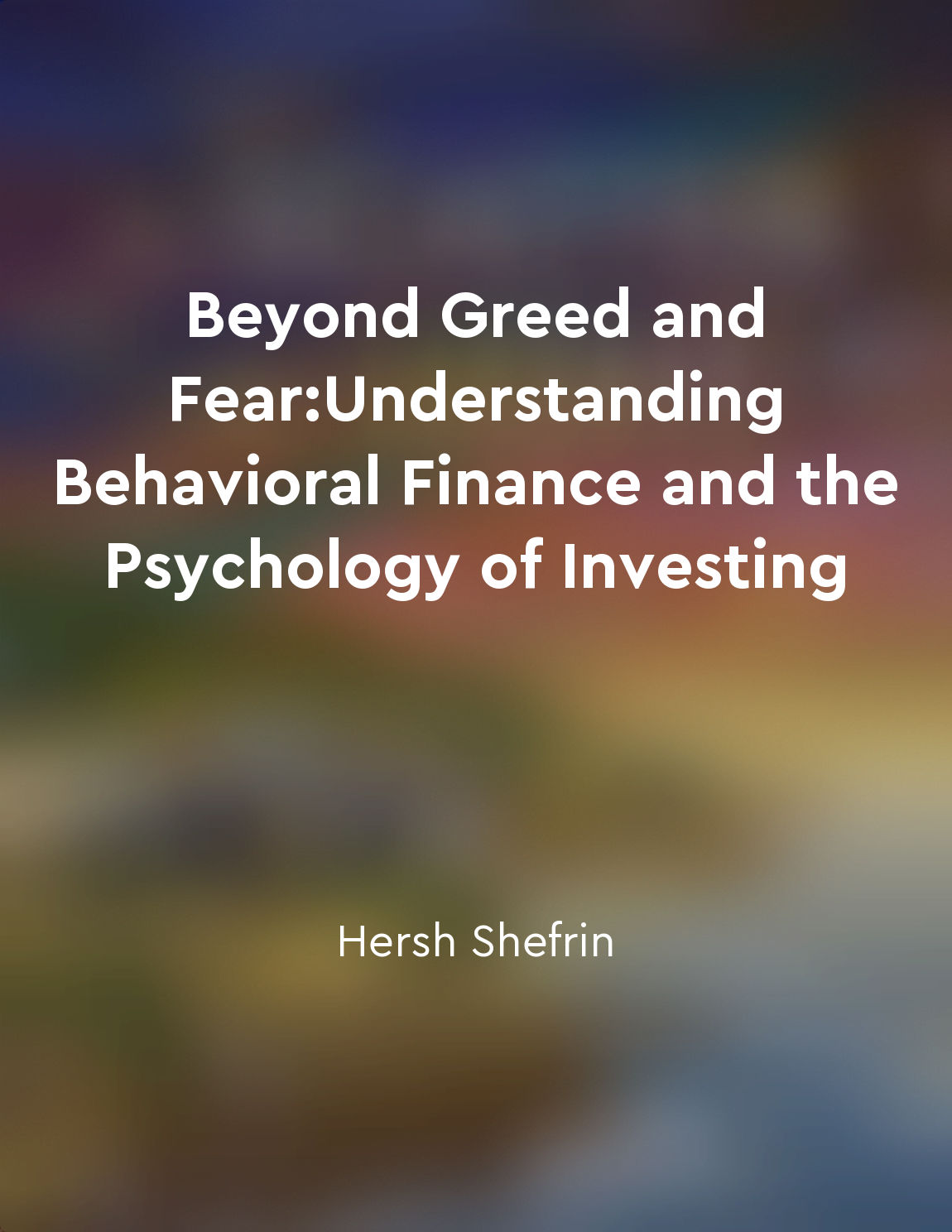Representativeness heuristic can result in inaccurate judgments from "summary" of Advances in Behavioral Finance by Richard H. Thaler
The representativeness heuristic is a mental shortcut that people use when making judgments about the probability of an event. Instead of carefully weighing all available information, individuals rely on how closely an event or object matches a particular prototype or stereotype. This cognitive shortcut can lead to inaccurate judgments because it overlooks important statistical information that may be relevant to the situation at hand. For example, individuals may erroneously believe that a coin is more likely to come up heads after a string of tails because they perceive it as balancing out. This flawed reasoning stems from the representativeness heuristic, which focuses on patterns and similarities rather than considering the random nature of coin flips. As a result, people may make decisions based on faulty assumptions and misinterpretations of probability. In the context of financial decision-making, the representativeness heuristic can lead investors astray by causing them to base their judgments on superficial similarities rather than underlying fundamentals. For instance, an investor might be swayed by a stock's recent strong performance and assume that it will continue to rise in value, neglecting to consider factors such as market conditions, company earnings, and industry trends. Furthermore, the representativeness heuristic can result in individuals making biased judgments and overlooking crucial information that contradicts their preconceived notions. This cognitive shortcut can lead to overconfidence in one's predictions and an unwillingness to update beliefs in the face of new evidence, thus perpetuating inaccurate judgments and suboptimal decision-making. In summary, the representativeness heuristic can be a double-edged sword, offering a quick and intuitive way to make judgments but also prone to errors and biases that can lead to inaccurate conclusions. By understanding the limitations of this mental shortcut and being mindful of its potential pitfalls, individuals can strive to make more informed and rational decisions in various aspects of their lives, including financial matters.Similar Posts
Intimacy: building connections with others
Intimacy is about more than just physical closeness; it's about building connections with others on a deeper level. It involves...
Our decisions are affected by our inherent cognitive biases
Richard B. McKenzie delves into the intriguing world of decision-making in his book 'Predictably Rational?' He explores the ide...

Anchoring influences how investors perceive value
Anchoring is a powerful psychological concept that influences how investors perceive value. When investors make decisions, they...

Understanding psychological tendencies can enhance investment strategies
Investors who are aware of their psychological tendencies are better equipped to make informed decisions and improve their inve...
Diversification is key to reducing risk in an investment portfolio
One of the most important principles in investing is the idea that diversification is essential for reducing risk in a portfoli...
Awareness of cognitive biases is crucial for successful investing
Understanding cognitive biases is essential for effective investing. These mental shortcuts can lead investors astray, causing ...
Representativeness heuristic can result in inaccurate judgments
The representativeness heuristic is a mental shortcut that people use when making judgments about the probability of an event. ...
How a problem is presented impacts our judgments
The manner in which a problem is framed can significantly influence the judgments we make. This phenomenon is known as "framing...
Overconfidence can lead to poor decisions
The phenomenon of overconfidence represents a common cognitive bias that can significantly impact decision-making processes in ...

Money is not just about numbers
Money is a highly emotional topic for many people. It's not just about the numbers in your bank account or investment portfolio...
